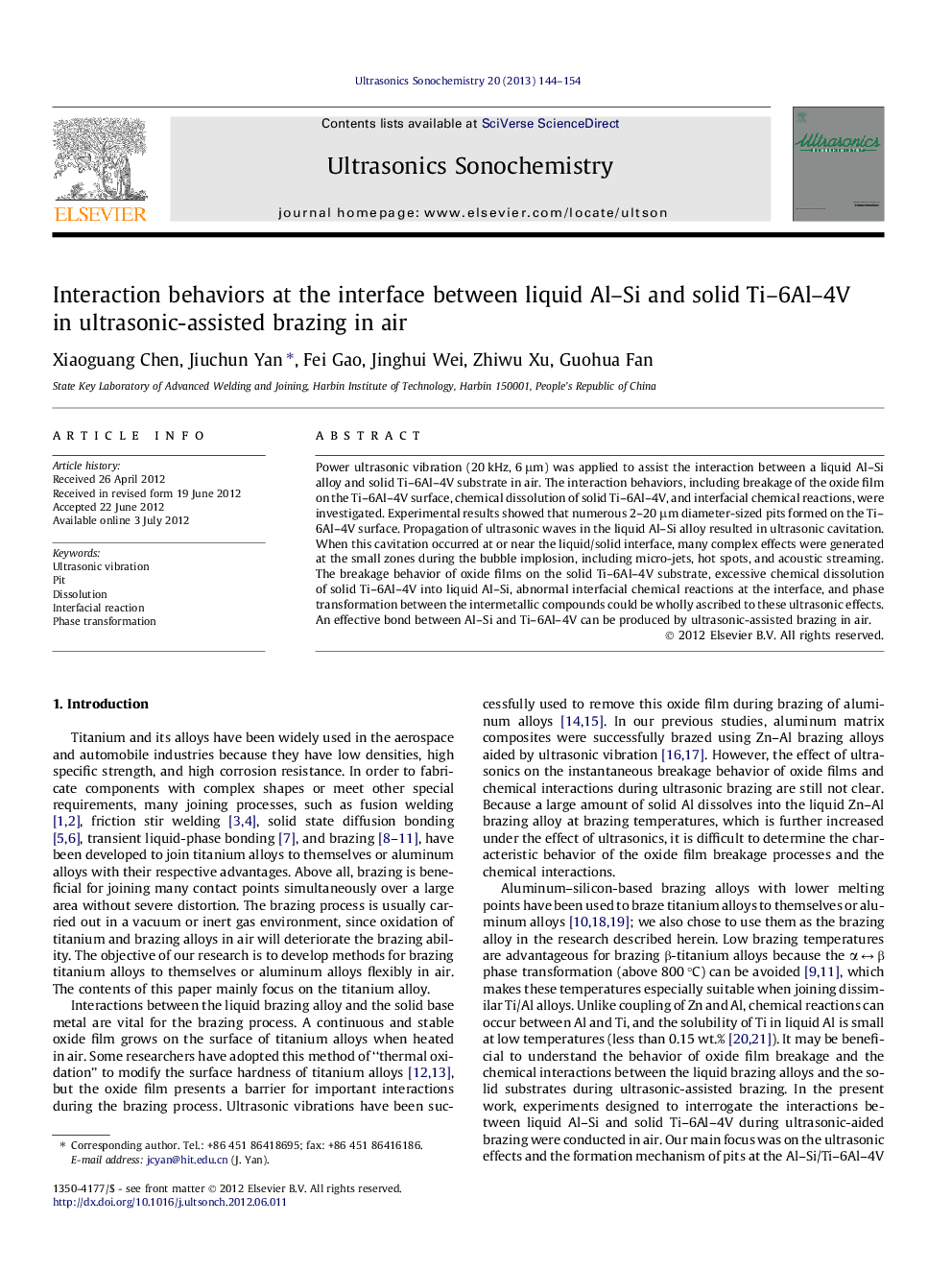| Article ID | Journal | Published Year | Pages | File Type |
|---|---|---|---|---|
| 1269074 | Ultrasonics Sonochemistry | 2013 | 11 Pages |
Power ultrasonic vibration (20 kHz, 6 μm) was applied to assist the interaction between a liquid Al–Si alloy and solid Ti–6Al–4V substrate in air. The interaction behaviors, including breakage of the oxide film on the Ti–6Al–4V surface, chemical dissolution of solid Ti–6Al–4V, and interfacial chemical reactions, were investigated. Experimental results showed that numerous 2–20 μm diameter-sized pits formed on the Ti–6Al–4V surface. Propagation of ultrasonic waves in the liquid Al–Si alloy resulted in ultrasonic cavitation. When this cavitation occurred at or near the liquid/solid interface, many complex effects were generated at the small zones during the bubble implosion, including micro-jets, hot spots, and acoustic streaming. The breakage behavior of oxide films on the solid Ti–6Al–4V substrate, excessive chemical dissolution of solid Ti–6Al–4V into liquid Al–Si, abnormal interfacial chemical reactions at the interface, and phase transformation between the intermetallic compounds could be wholly ascribed to these ultrasonic effects. An effective bond between Al–Si and Ti–6Al–4V can be produced by ultrasonic-assisted brazing in air.
► Impact of micro-jets mechanically breaks the oxide film on the Ti–6Al–4V surface at numerous tiny locations. ► Solid Ti–6Al–4V is excessively dissolved into liquid Al–Si under the effects of hot spots and ultrasonic stir. ► Different intermetallic compounds (TiAl3 and Ti7Al5Si12) form at different positions of pits. ► Accelerated effect of acoustic streaming on elements diffusion in liquid makes the TiAl3 transform to Ti7Al5Si12.
